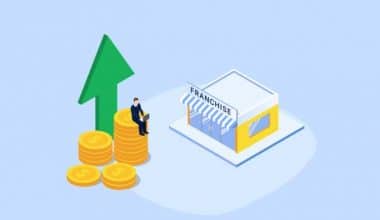Sales tactics are practices that can assist salespeople in signing more clients and selling more products. When employing a sales approach, your goal is to educate and persuade the customer to purchase your product or service. Learning about several sorts of sales tactics will help you design a strategy that works best for you. In this article, we explain the most effective High-pressure tactics used in car and Timeshare sales and how they work.
What are Sales Tactics?
Sales tactics refer to the many approaches and strategies used by sales professionals to persuade and convince potential consumers to acquire a product or service. These strategies are intended to influence a customer’s decision-making process, answer their problems, and eventually lead to a purchase.
Why are Sales Tactics Important?
Sales tactics are significant since they boost your sales performance and increase income for your firm. They are the steps you do to advance the sales process. Higher commissions are normally earned when you make more sales. Effective sales tactics can also help you build stronger client relationships and increase word-of-mouth recommendations.
Some sales tactics work best at the beginning of your relationship with your consumer, while others work best at the end of your sale. It is critical to determine which technique will best serve you and your company for each sale. Try to observe which ones you find easier to use than others. Furthermore, depending on the customer or the product you are marketing, you may choose one method over another.
Best Sales Tactics
Sales tactics are used by professionals from all industries to send messages to clients or consumers. Here are nine strategies that work and why they work:
#1. Network with others
Networking is a valuable strategy when it comes to properly marketing your firm to the public. You network with experts and their business communities to locate prospective new consumers or prospects. Using professional networking sites or attending networking events where you represent your organization are two ways to network.
#2. Request referrals.
Potential new clients are referred by current customers who have endorsed your services. It is an indirect method of gaining new consumers through referrals from current customers. When your customer has personally benefited from your product or service, it is the greatest time to ask for referrals.
#3. Create a relationship with your customers.
A relationship implies that you know enough about your customers to personalize your sales pitch to their specific requirements. Hearing what your customer wants isn’t enough. You must carefully listen, reading between the lines in their responses to your inquiries and nonverbal cues. They are more likely to listen to your advice if they believe you care about their wants and needs.
#4. Make an excellent first impression.
You may be contacting a potential consumer for the first time without meeting in person in many circumstances. Being excessively pushy, ambiguous, or utilizing poor grammar will rapidly transform a prospective consumer into a “not interested” one. When you reach out, you can employ a variety of “cold” approaches to find clients rather than expecting them to come to you.
#5. Use social media to your advantage.
Social networking is an organic way to positively communicate with your clients and sell your product or service. When you publish on social media, you can build a big network of individuals who are familiar with your brand and establish a following of potential clients. To interest your followers, you can also upload product demonstrations and good client testimonials.
#6. Try other sales techniques
You may discover possibilities to upsell or cross-sell your products or services after you understand your customers’ wants. Make sure to recommend, rather than force, other goods that may benefit your consumer.
#7. Use technology to your advantage
Make use of your company’s customer relationship management (CRM) system or app. A CRM system is a collection of programs that stores, organizes, and processes customer data, interactions, and services. It will assist you in tracking a customer’s previous interactions with your firm, such as what they purchased when they purchased it, and if they had any problems with their purchase.
High-Pressure Sales Tactics
A salesperson’s job is made more difficult by a few factors. One of these is when the buyer simply does not wish to purchase the product. When this occurs, the salesperson may use high-pressure tactics to persuade the consumer to change their decision.
High-pressure sales tactics can take various shapes, but they all have one thing in common: convincing the buyer to buy something. Let’s look at some additional high-pressure sales tactics to avoid:
#1. The time limit
This usually entails the salesman detecting your hesitation regarding a deal and notifying you that there is a time limit on the offer. Salespeople utilize this to put pressure on customers, making them believe they would lose a contract if they do not move quickly.
#2. The persistence close
Salespeople may try to look agreeable by approaching a ‘no’ with “What can I do to change your mind?” This strategy is centered on refusing to accept no for an answer and not giving up on a sale right away. Although it may appear to a customer as flexibility, this sales strategy is aiming to catch you off guard and change your answer.
#3. The takeaway
One of the most aggressive closing techniques. It is frequently used at the end of a sales process when a consumer has thought about their options but is hesitant to close the purchase. Salespeople use this method to exploit your fear of losing more money if you do not sign the offer.
#4. Illegal sales methods
While some sales methods are simply unethical, others are illegal. It is critical to keep an eye out for illegal behavior and to defend oneself from it. If you are a micro or household business, you can contact the Ombudsman about issues with your energy or communication suppliers.
#5. Buying blindly
This is common in cold-calling when salesmen fail to deliver enough information to the potential consumer.
#7. Using manipulative talk
The line “I’m sure you didn’t get where you are today by consulting with your wife on everyday decisions” from The Wolf of Wall Street is an example of a salesperson influencing a customer into committing to a contract by playing on their ego.
#8. Exaggerating prior performance
A salesperson may make false statements regarding his or her track record or reputation. The goal for this is to gain a prospective client’s trust in their services. These statements are difficult to verify because you may be unaware of the company’s reputation.
What to Do Instead of Resorting to High-Pressure Sales Tactics?
Now that we’ve established that high-pressure sales tactics are not acceptable, here are a few strategies to assist you to make a business without using excessive persuasion, manipulative talk, or hard selling:
#1. Get highly qualified leads instead of contacting everyone
Instead of contacting everyone you can find, concentrate on locating high-quality prospects who are ready and willing to purchase your product or service.
#2. Provide useful content and resources
As previously said, high-value content is critical to any successful sales process. If prospects are 95% of the way through their purchasing experience before contacting your sales team, it implies they’re doing their homework and looking for solutions to their queries.
#3. Warm-up prospects with social selling
When salespeople utilize social media platforms to engage with prospects, create connections, and ultimately make deals, this is referred to as social selling. The entire notion is built on the idea that if buyers trust the seller, they are more likely to make a purchase. And social media is a great place to start building that trust.
#4. Listen to prospects instead of rushing the close.
When it comes to closing agreements without using high-pressure sales approaches, this is one of the most critical factors to consider. According to Gong data, top-producing B2B sales professionals speak 43% of the time (on average), leaving 57% of the time (on average) for the prospect to speak.
Car Sales Tactics
When you visit a car dealership, you will almost certainly be subjected to high-pressure sales tactics. Here are some of the most popular car sales tactics you may encounter.
#1. Attempting to persuade you to finance through the dealership
If you’ve done your homework, you may have utilized a car payment calculator to estimate the total cost and monthly payment you can afford.
The salesman will want to know this, possibly with the purpose of “massaging” the purchase price of the car and financing terms/trade-in conditions into your budget so that you choose the dealership’s financing arrangement.
#2. Playing for the sake of time
The process of purchasing a car may drain a person’s energy, as car salespeople are well aware. Unscrupulous people will take advantage of this by prolonging the process and insisting on going back and forth with their supervisor until they throw up their hands and simply give in to make things simpler.
#3. Concentrating on the trade-in
Another technique used by car salesmen is to try to influence the trade-in value of your vehicle to make it look like you’re receiving a great bargain on the new vehicle. Your eyes may light up when they increase the trade-in value of your car, and you may overlook what they do “with the other hand,” i.e., they may inflate the price of the car you want to buy while you’re not paying attention.
#4. Adding extras that you don’t need or want
The salesperson may skillfully incorporate optional extras into your deal that you do not require or desire. They may appear to be a required component of the agreement, with no detailed breakdown and explanation of all the fees you’re paying. Gap insurance, extended warranties, window tinting, and fabric protection are common examples.
#5. Inflating interest rates
Car dealerships are under no obligation to provide you with a competitive interest rate. Many may raise the interest rate on financing loans to attract purchasers who are unaware of the options and enhance their profits from the transaction. Dealerships do not want you to shop around; instead, they may encourage you to take the simple route of arranging financing via them.
#6. Psychological profiling
A car salesman can usually detect an unprepared buyer walking into the showroom from a mile away, and their training kicks in. Basic psychological profiling, which involves recognizing a prospective buyer’s vulnerabilities, is frequently included in the training.
#7. Using a variety of standard sales “closes”
Car salespeople are trained to clinch deals quickly and frequently. They are well-trained in numerous ways to achieve this since they know that merely asking the appropriate questions will pressure many people into saying “yes.”
Timeshare Sales Tactics
Timeshare Sales Tactics of the past have tarnished the industry, placing you in a position to overcome objections from potential customers. However, the appropriate technique can help you reassure hesitant prospects that you’re providing what they’re looking for.
#1. Investigate your target audience.
All successful salespeople learn about their target clients, but timeshare salespeople must go much further. It’s not enough to know that someone enjoys going on vacation. (Who doesn’t enjoy going on vacation?) You’ll want to know where they’ve been, how much they’ve spent, and what kinds of activities they enjoy.
#2. Be upfront
Nobody enjoys feeling manipulated. If a ninety-minute presentation is part of the timeshare pitch, make sure it is only ninety minutes. Timeshare sales tactics that use bait and switch are virtually always doomed to fail. Whether it’s following through on freebies offered or keeping time commitments, the more honest you are, the better chance you’ll have of attracting interest.
#3. No pressure
The “classic” hard pitch is no longer a viable timeshare sales tactic. This does not imply you should give up after the first no, but you should also avoid pressuring prospects to buy. When someone says they’re not interested, find out why and be prepared to answer. As a timeshare seller, you are already familiar with the most prevalent objections.
#4. Maintain your cool and sell on.
Don’t be alarmed if you suspect you’re losing a prospect or if they block you from the start. Forget about the conclusion. It’s not about that right now. When you call someone about a timeshare, you want to pique their curiosity enough for them to try it out. The conclusion comes afterward.
#5. Create a fear of missing out
Make your offer scarce or limited in scope. “I can only give you this price if you buy today.” While this may come out as forceful, it does create a sense of urgency. No one wants to pass on a fantastic offer, and if this is the only time it’s available, a prospect may be more willing to buy.
#6. Keep the door open.
If a prospect declines to buy, don’t dismiss them. Compile all of their objections in their client profile (which you can do with our call management system), think about them, and come up with solutions.
#7. Follow up
Prospects should be followed up with unless they appear angry or upset. Perhaps their requirements will alter in a month or two. Or maybe you’ll have a better deal to make for them. Perhaps they’ll be in a better mood to purchase.
How Do You Sell Things to People?
Selling things to people involves understanding their needs, wants, and motivations, and presenting a product or service in a way that resonates with them. Here are some tips for selling things to people effectively:
- Understand the customer
- Focus on benefits
- Use social proof
- Create urgency
- Address objections
- Close the sale
- Follow up
What Is Tactical vs Strategic?
Tactical planning is focused on the short-term, practical details of implementing a plan or strategy, while strategic planning is focused on the long-term goals and overall direction of the business. Both types of planning are important for achieving business success.
What Are the 6 Ps in Sales?
The 6 P’s in sales are a framework for understanding the key elements that contribute to successful selling. The 6 P’s are:
- Product
- Price
- Place
- Promotion
- People
- Process
What Are 3 Selling Techniques?
There are many different selling techniques that sales professionals can use to connect with customers and persuade them to make a purchase. Here are three common selling techniques:
- Consultative selling
- Solution selling
- Relationship selling
Conclusion
There is no single set of sales methods that will operate flawlessly in every sales organization. That is why it is critical to have the opportunity to do so. Begin testing these sales approaches right away to find what performs best in your firm. The most successful ones can then be incorporated into your approach.
- TIMESHARE CANCELLATION: Everything You Should Know
- 10 BEST AND WORST TIMESHARE COMPANIES IN THE WORLD
- WHAT IS BUSINESS STRATEGY: Definition and How To Develop One
- Different Internet Marketing Options for Your Business
- Sewer Scope: Inspections, Costs & How to detect Scams
- MEDIA PLANNING: What Is It & Why Is It Important?






